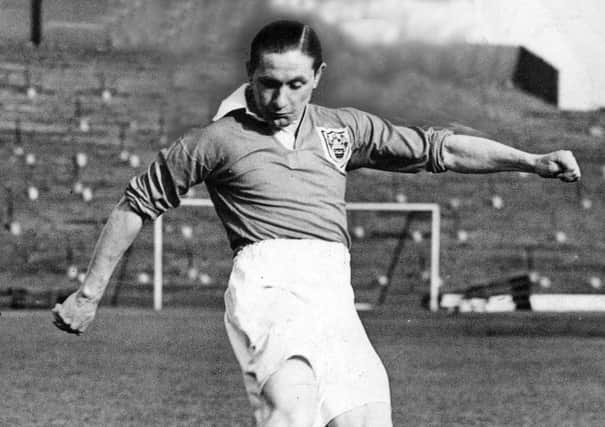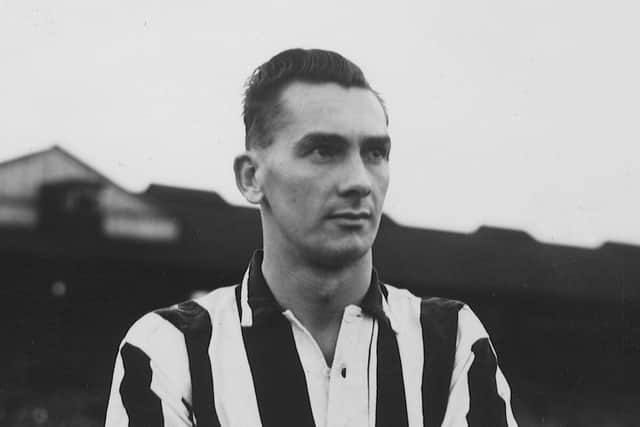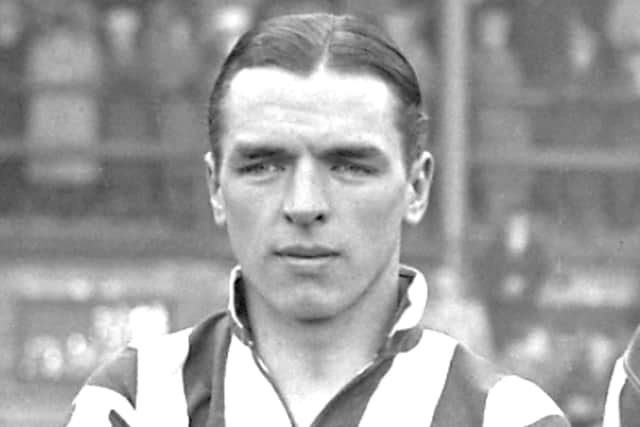Welcome guests helped deflect attention for nation locked in war


Several issues face the FA, EFL and Premier League as they decide whether to continue or not continue this term, and with the season 75 per cent completed, matters are made all the more difficult for those tasked with making the vital decisions.
In 1939 there was little room for manoeuvre as the English football season was abandoned after just three weeks as Great Britain declared war with Germany.
Advertisement
Hide AdAdvertisement
Hide AdAdolf Hitler’s forces marched into Poland on September 1 and two days later on September 3, Prime Minister Neville Chamberlain announced Britain was at war – one that would last almost six years.


Football games up and down the country were still played on September 2 but they were to be the last competitive fixtures for almost seven years.
Sheffield United had enjoyed a fine start to the season, winning two and drawing the other of their first three games. They were second in the table, behind Blackpool, who were the only side to enjoy a 100 per cent start in the old First Division.
Huddersfield Town, Middlesbrough and Leeds United were also in the top flight but had managed just one win between them in nine games.
Advertisement
Hide AdAdvertisement
Hide AdThe latter two picked up a point each and sat bottom of the table, 21st and 22nd, respectively. Sheffield United beat Leeds 1-0 in the only top-flight Yorkshire derby played.


The Blades’ great start came off the back of promotion from the Second Division, as they beat Steel City rivals Sheffield Wednesday to the runners-up spot in the 1938-39 season by a single point.
A win was only worth two points during that season with three points for a victory not introduced until 1981. The same system was not formally adopted by FIFA until as late as 1995.
After coming so close to promotion the previous season, the Owls had not started their 1939-40 campaign well.
Advertisement
Hide AdAdvertisement
Hide AdThey had notched just one win, beating Barnsley 3-1, from their three games.
It had been a rough start for all of Yorkshire’s second-tier clubs.
Bradford Park Avenue sat rock bottom after picking up just one point from a possible nine with a 2-2 draw at Millwall.
Barnsley won 4-1 against Nottingham Forest but lost their other two outings.
Advertisement
Hide AdAdvertisement
Hide AdBelow the Second Division, the leagues were divided into North and South regions with six Yorkshire clubs starting the campaign in Division Three North. Halifax Town recorded the joint-biggest win in the division, with a 3-0 success at Stockport County. The Shaymen were second in the table with two wins and one draw when the campaign was abandoned.
Football continued during the conflict as clubs were split into 10 regional leagues following the abandonment of the season. The majority of Yorkshire clubs were placed in the East Midlands and North-East divisions, which were won by Chesterfield and Huddersfield Town, respectively.
Barnsley and Sheffield United finished second and third in the East Midlands division while Middlesbrough, Leeds, Bradford PA, Bradford City, Hull City, York City and Halifax Town largely made up the North-East division.
With the majority of the nation focusing on the war effort, squads were largely depleted due to players joining the army or taking up work in munitions factories.
Advertisement
Hide AdAdvertisement
Hide AdSeveral players appeared as guests for other clubs with Raich Carter, future Hull player and manager and Leeds manager, featuring for Huddersfield and York City.
Jackie Milburn, Stan Mortensen and Len Shackleton also featured for Huddersfield during the war. These matches did not count in players’ official records but Milburn managed over 400 professional appearances, spending most of his career at Newcastle United before playing just over 50 games for Belfast club Linfield.
The former England international, who scored over 200 career goals, also played for Sheffield United in the early 1940s. Matt Busby, the former Manchester United manager who became the first man to win a European Cup with an English club, was a guest player for Middlesbrough.
The majority of football matches were only played when possible with the structure of each season changing.
Advertisement
Hide AdAdvertisement
Hide AdIn 1940-41, the teams were split into north and south leagues with the winner crowned on goal average rather than points.
The following season followed a similar pattern but London clubs played in their own league while winners were decided on points average rather than total points. Three regional tournaments, north, south and west were formed for the 1942-43 season and the same format was continued the following campaign, however many matches went unplayed.
In 1944-45, Huddersfield Town won the League North.
Competitive football resumed for the 1945-46 season but only in the FA Cup, as Great Britain accepted Nazi Germany’s unconditional surrender on May 8, 1945.
Regional leagues continued for one more season but to make up for the lack of competitive football, all FA Cup ties from round one up to the quarter-finals were two-legged.
Advertisement
Hide AdAdvertisement
Hide AdDerby County won the Cup in 1946 as Sheffield United won the Football League North before all competitive action resumed in 1946-47. Doncaster Rovers won the Third Division North in the first season back, finishing eight points ahead of second-placed Rotherham.
Halifax Town finished bottom of the table, recording just eight wins in 42 games, but were re-elected for the following season.
Sheffield Wednesday narrowly escaped relegation from the second tier, finishing third from bottom as Leeds United dropped out of the First Division, losing 30 of their 42 top-flight matches.
The return of the Football League saw crowds swell in stadiums up and down the country.
Advertisement
Hide AdAdvertisement
Hide AdMany clubs recorded their highest average attendance in the years following the war.
The teams in the top four tiers saw their attendances rise on average by over 5,000 from 16,413 to 21,642. Those figures rose by just under 3,000 to 24,379 the following campaign before hitting a peak in the 1948-49 season with an average attendance of 24,930.
That remains the highest average attendance on record.
Football has been on hiatus since the middle of March due to the outbreak of coronavirus and when the time comes for fans to pour back into stadiums there is every chance that record will be broken.